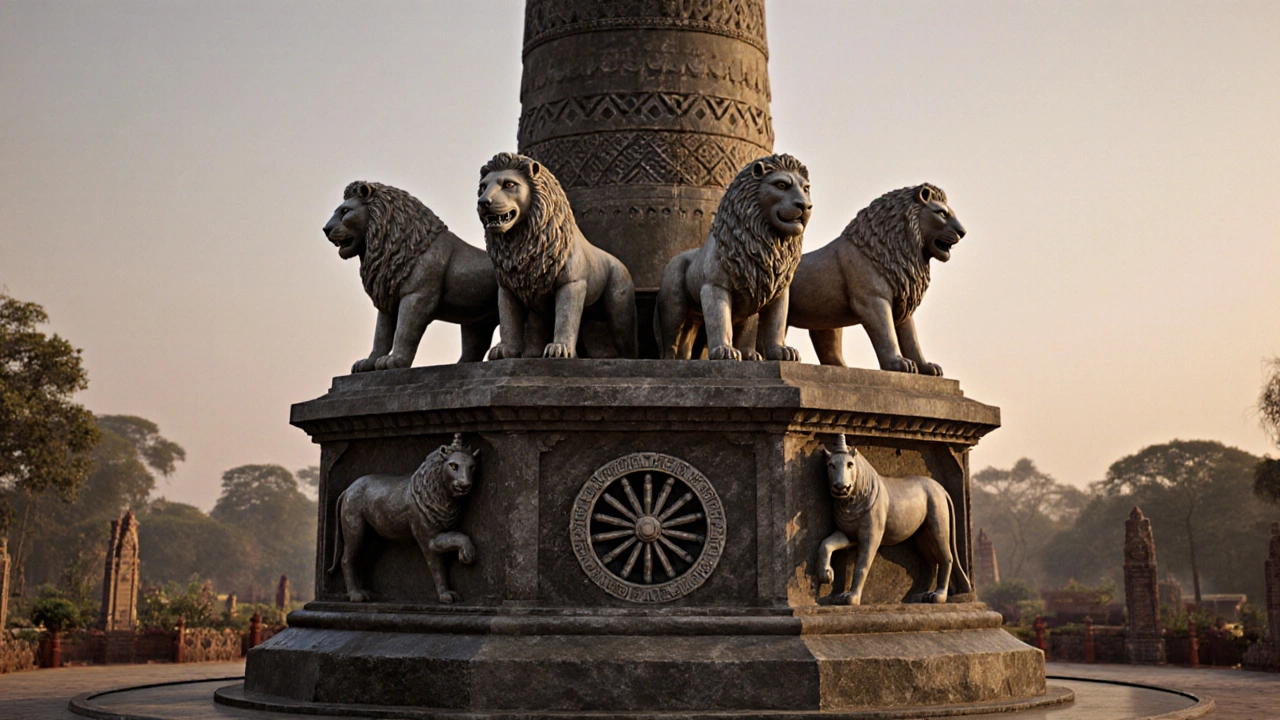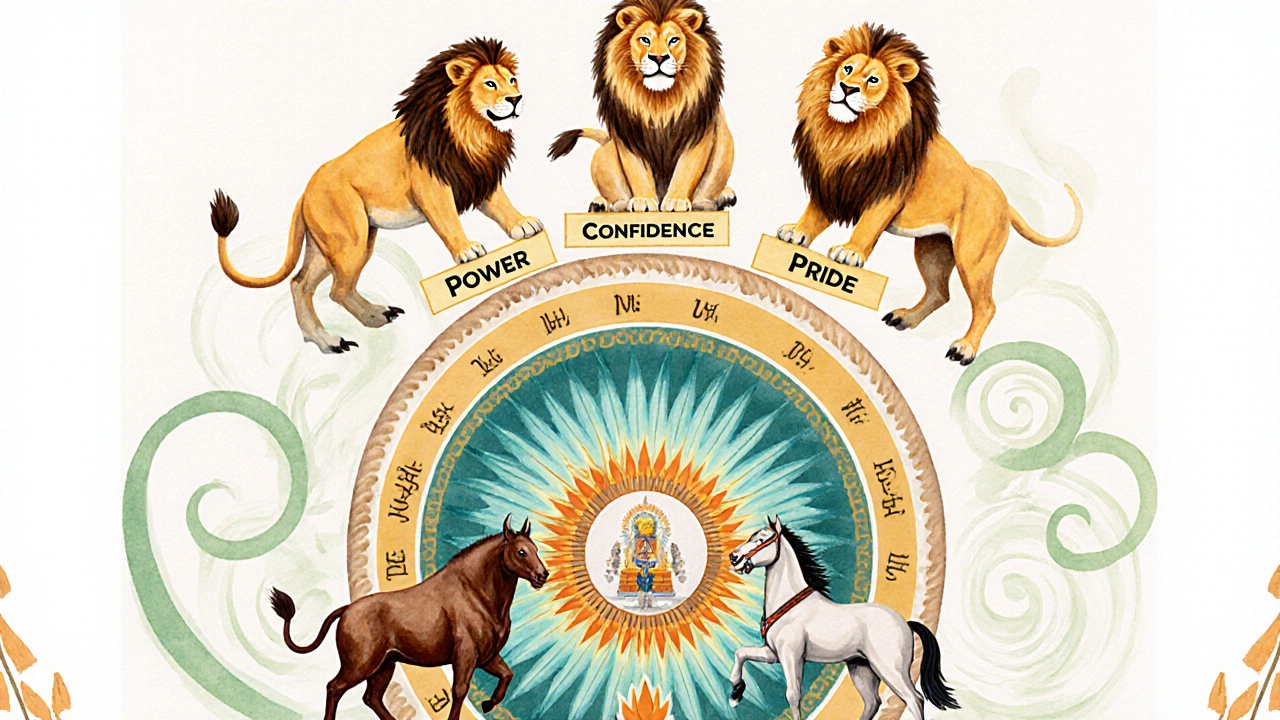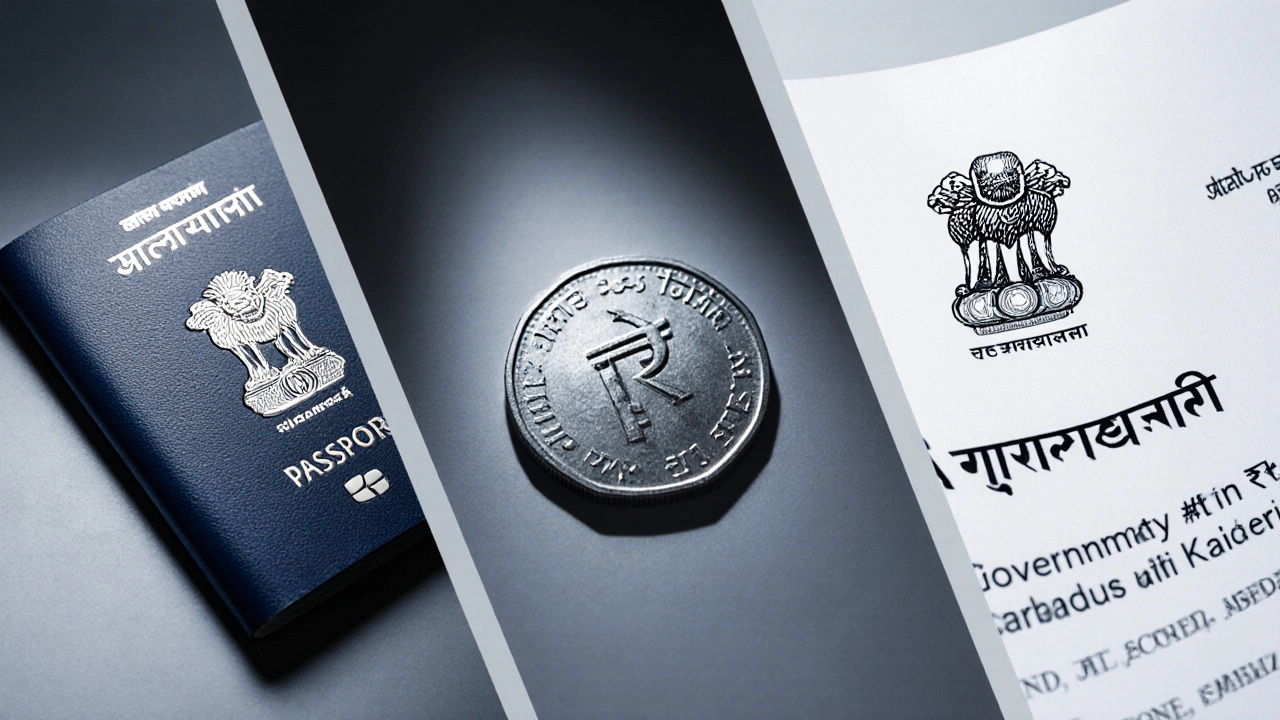India’s National Emblem: The Lion Capital of Ashoka Explained
 Oct, 13 2025
Oct, 13 2025
India National Emblem Quiz
Test Your Knowledge
Answer 5 questions about India's National Emblem. Results will show explanations for each answer.
1. How many lions are depicted in the National Emblem of India?
2. What does the bull on the abacus represent?
3. What does "Satyameva Jayate" mean in Sanskrit?
4. When was the National Emblem officially adopted?
5. Where is the National Emblem not typically found?
Quiz Results
Your Score: 0/5
When people ask “What is the symbol of India?” they’re usually referring to the national emblem of India, a stylized rendition of the historic Lion Capital of Ashoka.
Key Takeaways
- The national emblem is the Lion Capital of Ashoka, originating from a 3rd‑century BCE pillar in Sarnath.
- Four majestic lions stand atop a polished basalt base, symbolising power, courage, confidence, and pride.
- Below the lions are a bull, a horse, and the Dharma wheel (Ashoka Chakra), each with a specific meaning.
- It appears on passports, currency, government documents, and many official seals.
- India also has other iconic national symbols - the tricolor flag, Bengal tiger, Indian peafowl, and lotus.
What Is the National Emblem?
National Emblem of India is a stylized representation of the Lion Capital of Ashoka, adopted on 26 January 1950. The design captures a moment from ancient Indian history and gives it a modern, constitutional identity.
Historical Roots: The Ashoka Pillar
Lion Capital of Ashoka originally crowned a stone pillar erected by Emperor Ashoka around 250 BCE in Sarnath, near Varanasi. Ashoka, a Mauryan ruler, embraced Buddhism after the Kalinga war and used the lion as a symbol of his commitment to dharma (righteousness). The original pillar stands 7.2m tall and is carved from a single block of basalt.

Design Elements and Their Meanings
The emblem features four lions standing back‑to‑back, but only three are visible in a two‑dimensional rendering. Their key messages are:
- Power - the might of the nation.
- Courage - the willingness to face challenges.
- Confidence - faith in India’s future.
- Pride - cultural and historical pride.
Below the lions lies a circular abacus with a bull on the right, a horse on the left, and a Dharma wheel (Ashoka Chakra) at the center. The bull represents steadfastness, the horse denotes speed and loyalty, and the wheel symbolizes the eternal wheel of law.
Encircling the abacus is the Sanskrit motto Satyameva Jayate - “Truth alone triumphs.” The phrase is taken from the Mundaka Upanishad and appears in the official seal of the Government of India.
Where You’ll Find the Emblem
Since its adoption, the emblem appears on a wide range of official items:
- Indian passports and visas.
- All banknotes and coins issued by the Reserve Bank of India.
- Government ministries, departments, and public sector undertakings.
- Legal documents such as Acts of Parliament and Supreme Court judgments.
- Most Indian government websites use the emblem in their header or footer.
These placements reinforce the emblem’s authority and remind citizens of the nation’s core values.
Other Prominent National Symbols
India’s identity isn’t limited to its emblem. The country has a set of official symbols that together paint a vivid picture of its biodiversity and heritage.
| Symbol | Official Representation | Significance |
|---|---|---|
| National Emblem | Lion Capital of Ashoka | Authority, unity, dharma |
| National Flag | Tricolor (Tiranga) | Saffron - courage; white - peace; green - faith; Ashoka Chakra - progress |
| National Animal | Bengal Tiger | Strength, agility, and exotic heritage |
| National Bird | Indian Peafowl | Beauty, vibrancy, and cultural relevance |
| National Flower | Lotus | Purity, resilience, and spiritual significance |

Common Misconceptions
Many people mistake the tricolor flag for “the symbol of India.” While the flag is certainly iconic, the Constitution officially designates the Lion Capital as the national emblem. The flag, however, includes the Ashoka Chakra-directly borrowed from the emblem’s wheel-creating a visual link between the two.
Another frequent error is using the “Map of India” as a symbol. The map is a geographic tool, not a constitutional emblem.
How to Recognize the Emblem Quickly
- Look for four lions in a circular arrangement; only three are usually visible.
- Spot the abacus with a bull on the right, a horse on the left, and a 24‑spoke wheel in the center.
- Check for the inscription “SatyamevaJayate” underneath the wheel.
These three visual cues will tell you you’re looking at the national emblem.
Frequently Asked Questions
Why does the emblem have four lions?
The four lions represent power, courage, confidence, and pride-qualities the nation aspires to embody. Historically, the pillars featured four lions facing the four cardinal directions, symbolising vigilance.
What does the Ashoka Chakra on the flag mean?
The 24‑spoke wheel is taken directly from the Lion Capital’s abacus. It stands for the eternal wheel of law (dharma) and progress.
When was the emblem officially adopted?
The Constituent Assembly adopted it on 26 January 1950, the day the Constitution came into force.
Is the emblem used on Indian coins?
Yes. Since the 1950s, every Indian rupee coin carries a miniature version of the Lion Capital on its reverse side.
Can private businesses use the national emblem?
No. The Emblem and Flag Code of India strictly limit their usage to government bodies and official documents. Unauthorized use can lead to penalties.
What is the meaning of “Satyameva Jayate”?
It translates to “Truth alone triumphs.” The phrase underscores the constitutional commitment to justice and integrity.